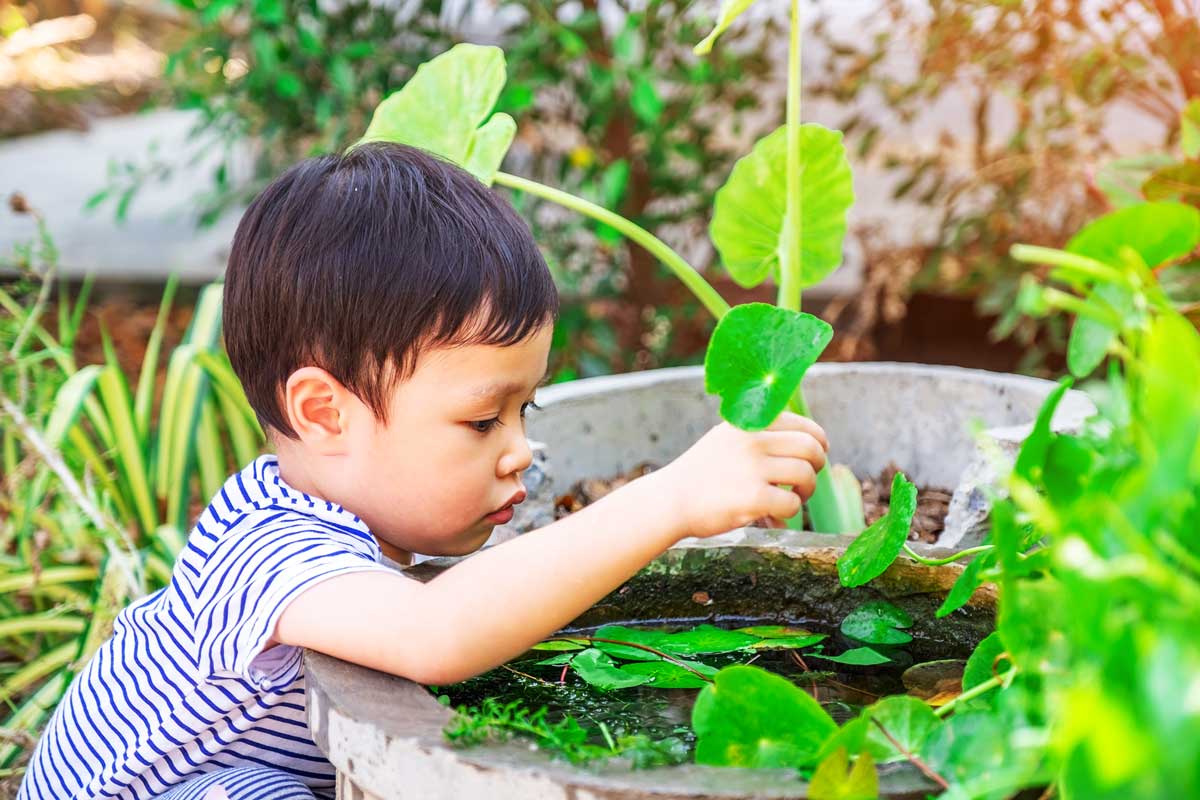Following Animal Prints in the Snow
In this lesson, children will investigate footprints left in the snow and follow the clues to discover who left those prints!
Content Area:
Weather and Seasons
Learning Goals:
This lesson will help toddlers and preschoolers meet the following educational standards:
- Develop beginning skills in the use of science and engineering practices such as observing, asking questions, solving problems and drawing conclusions
- Explore concepts and information about the physical, earth and life sciences
- Understand that living things rely on the environment and/or others to live and grow
Learning Targets:
After this lesson, toddlers and preschoolers should be more proficient at:
- Planning and carrying out simple investigations
- Collecting, describing, comparing and recording information from observations and investigations
- Identifying, describing and comparing the physical properties of objects
- Using tools and technology to assist with scientific and engineering investigations
- Generating explanations and communicating ideas and/or conclusions about their investigations
- Observing and discussing changes in the weather and the seasons using common vocabulary words
- Exploring the physical properties of objects
- Exploring the concepts of force and motion
- Exploring changes related to the weather and the seasons
- Using tools and technology to assist with scientific and engineering investigations

Following Animal Prints in the Snow
Lesson plan for toddlers/preschoolers
Step 1: Gather materials.
- A snowy area
- Laminated animal footprint cards
Note: Small parts pose a choking hazard and are not appropriate for children age five or under. Be sure to choose lesson materials that meet safety requirements.
Step 2: Introduce activity.
- Read the book, Big Tracks, Little Tracks: Following Animal Prints in the Snow, by Millicent E. Selsam
- Examine the laminated footprint cards with the children. Say: “Different animals make tracks with different shapes. The shape of the track can help you identify the animal that left it.”
- Ask: “What animals might be outdoors on the playground?”
- Explain: “Size also makes a difference. Adults make larger footprints than kids.”
- Explain: “Gait is the pattern of motion or size of the paces of the person or animal. For example, a fox that is running will have a different pattern of motion than one that is sniffing and tracking. An animal that is moving fast will have a different pattern than one that is moving slowly.”
- Tell the children that they are going on a scavenger hunt to look for animal footprints.
Step 3: Engage children in lesson activities.
- Once the children are assembled outdoors, ask them to walk carefully around the playground to look for footprints.
- When they discover a footprint, tell them to examine the footprint closely to see if they can identify it by its size and shape.
- Ask: “Do you recognize this footprint? How would you describe it?”
- Ask: “Can you match the footprint with one of the footprints on your card? Who does this print belong to?”
- Ask: “Do the footprints lead to a tree or bush? Can you find a habitat nearby that matches the footprint clue?”
- Ask: “Do your own boots leave tracks that look different than your friends’ boot prints?”
- Ask: “Do your footprints look different if you hop or skip?”
Step 4: Vocabulary.
- Analyze: To examine something in detail
- Clue: A hint that helps solve a puzzle, problem or mystery
- Examine: Look closely and carefully at something
- Footprint: A mark pressed by a foot onto a surface
- Gait: A pattern of motion or the size of the paces of a person or animal
Step 5: Adapt lesson for toddlers or preschoolers.
Adapt Lesson for Toddlers
Toddlers may:
- Try matching boot prints to their owner
Child care providers may:
- Ask young learners to listen for birds or squirrels and find their footprints
Adapt Lesson for Preschoolers
Preschoolers may:
- Make animal footprints in clay or playdough with plastic animals for indoor play
- Use a measuring tape to measure prints and gaits
Child care providers may:
- Explain that common animal gaits fall into categories such as walkers, bounders, hoppers and waddlers and encourage older children to examine the gait of a footprint and use it as a clue to identify the animal tracks
- Encourage children to get down on all fours and replicate the animal gaits
Suggested Books
Music and Movement
- “Animal Tracks,” a song performed by Laura Doherty
- Play “Move Like an Animal,” a follow-the-leader exercise game for toddlers and preschoolers
Outdoor Connections
- On a day with freshly fallen snow, instruct one child to make tracks in the snow to a hiding spot. Then send the other children out to follow the footprints the hiding spot!
Web Resources
- Visit the Old Naturalist website for information, a video and a downloadable worksheet to help children identify animal tracks in the snow.
Comment on this lesson